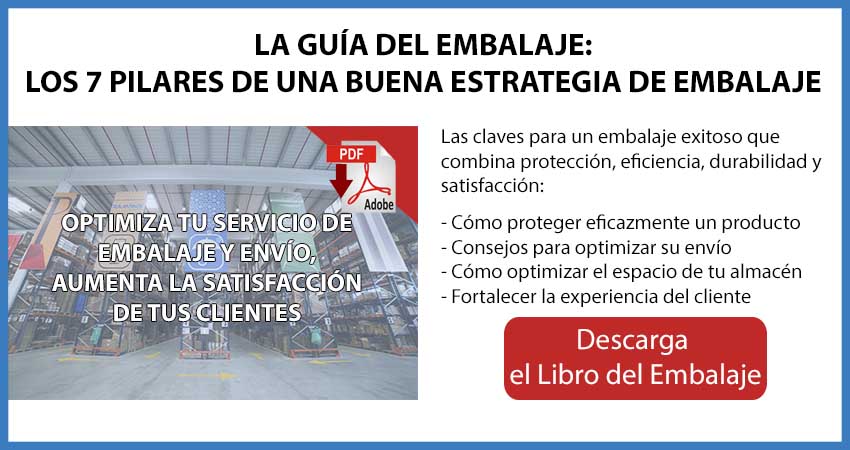Saving time, increasing productivity and efficiency: improving warehouse logistics is nowadays a key factor for companies. The continuous growth of e-commerce and the multiplication of orders to be shipped per day require optimal supply chain management and the right choice of warehouse equipment
Follow our 10 tips to improve your warehouse logistics.
1. A small warehouse that ships 50 orders per day does not follow the same strategy as a warehouse that has more than 1,000 shipments per day. Identify your needs, evaluate your warehouse and the number of orders being placed before establishing your logistics strategy.
- Small logistics: for around 50 orders per day, 500 m² of warehouse space with a team of 5 people, the organisation does not require any particular strategy: picking is done as the order is placed and team members can perform different functions depending on the need.
- Structured logistics: More than 50 orders per day, the warehouse must be more professional, the distribution of products must be rigorous, picking must be done by order batches and each team member must be assigned a particular task.
- Industrialised logistics: More than 1,000 orders per day, the warehouse must be automated to get the pace up. The logistics manager must install a WMS (Warehouse Management System), which is a warehouse management software to optimise order processing.
- Logistics outsourcing: The last practical but costly option is to outsource specialised third-party warehousing logistics, capable of handling significant peaks in activity.
2.
Improving the working environment
- Limit unnecessary movements: Optimise the distribution of products on the shelves to facilitate picking.
- Limit the transport of heavy loads: Equip your warehouse with transport trolleys, folding forklifts or pallet trucks. You will avoid the risk of accidents at work and take a lot of work away from your employees.
- Investing in quality equipment is also an important option to improve the working environment: a high-performance WMS, barcode scanners, displays, etc., will facilitate the work of team members and reduce the rate of logistical errors.
- Machines also help: Wrapping machines, filler production machines or sealers, depending on your needs, can speed up the work a lot.
Structure and organise the space in the warehouse
Good use of space is essential to avoid transforming your warehouse into a battlefield. To structure the space, you should
- Establish a numbering system for all products and create logistical routes that will lead quickly to the desired product.
- Delimit storage and work areas: overstock areas, storage areas, picking areas, arrival and departure areas, loading and unloading areas, etc.
4.
Specialise the tasks of each of the employees
The more professionalised a warehouse is, the more precise the tasks to be performed by the teams. And if the employees have a good knowledge of their tasks, the more efficient the warehouse activity will be. Distribute the tasks of each one from the different areas of the warehouse: picking, order preparation, receiving, shipping, packing, postage, etc.
5. Establish a high turnover stock area
In every warehouse there are products with a high turnover, they are the most requested by customers and therefore the most requested by the team members.It is recommended to create a special area for the storage of these products, an area near the arrival area and the packing/shipping area.
6. Organise products depending on their logistic class
To improve your warehouse management, consider classifying your products according to their specificities
- Heavy or bulky products (requiring dedicated and technical handling)
- Fresh products
- Customisable products (moving from the storage space to the manufacturing area to end up in the packaging area)…
esta organización te ahorrará tiempo durante el flujo logístico (recepción de pedidos, picking, envío de pedidos).
7. Usar la técnica de cross-docking
El objetivo del cross-docking es que el producto esté lo mínimo posible en tus instalaciones. El cross-docking es una técnica de logística donde los productos se descargan en su llegada a tu almacén y se mueven directamente hasta el transporte de carga sin pasar por el stock, de esta forma se consigue que no se almacenen.
El cross-docking tiene muchas ventajas ya que cuanto más tiempo está un artículo almacenado, más disminuye su valor y más aumenta las posibilidades de roturas, pérdida o robo.
8. Centrarse en la preparación de productos similares
Muy importante debido a que puede ahorrarse tiempo de picking: si se observan que hay órdenes de entrega de un mismo producto, se conseguirá la ventaja de prepararlas al mismo tiempo y evitar el ir y venir del picking más de una vez.
9 .
Automatizar la
gestión de las roturas de stock
Gestionar la
The three key points to remember:
- Organisation is the key word in logistics management: a warehouse structured according to the real needs of the company, a specialisation of tasks, an organisation of quality products that will save time and efficiency.
- The working environment should be as pleasant and safe as possible to protect the health of the employees.
- Simple tips, such as high turnover areas, cross-docking, automated out-of-stock management, enable better warehouse logistics management in the long run.
















